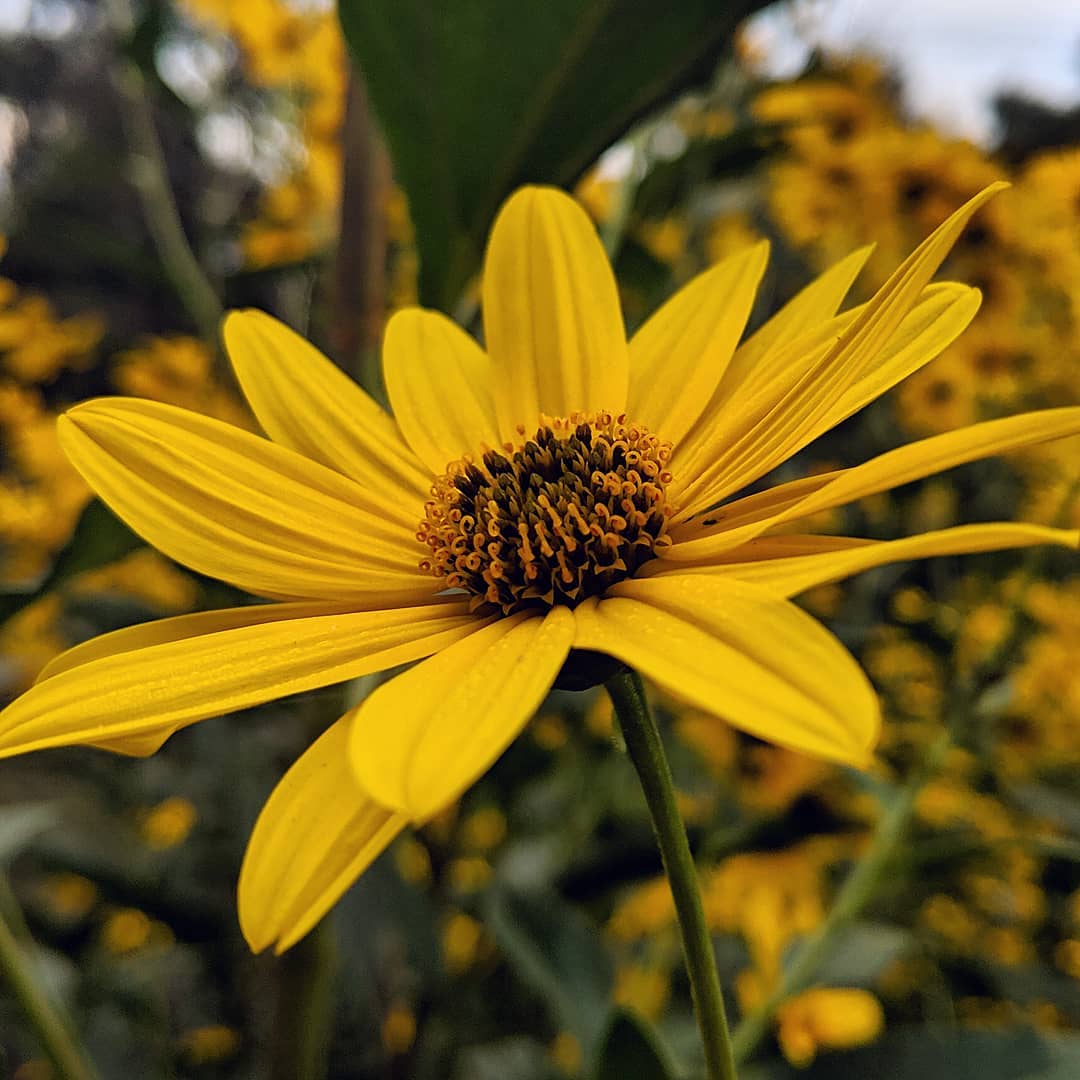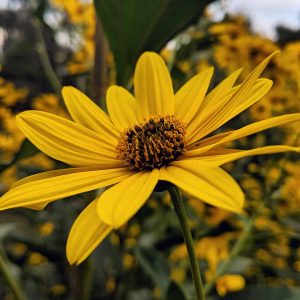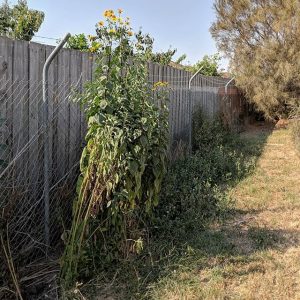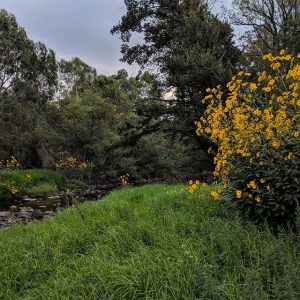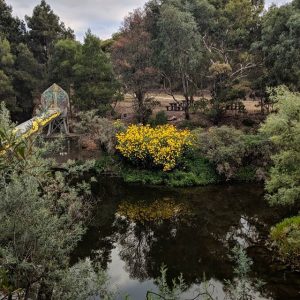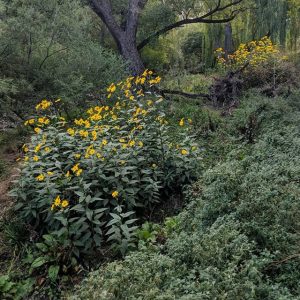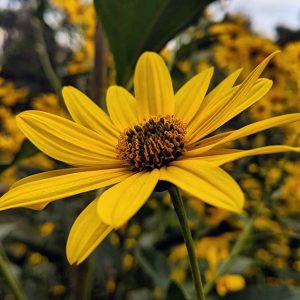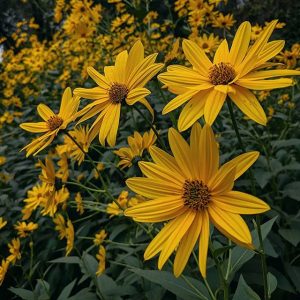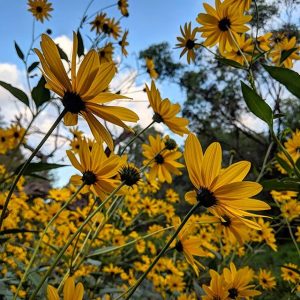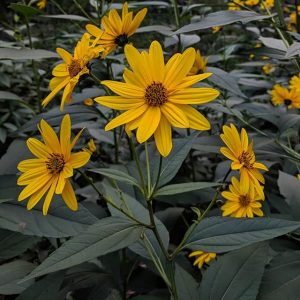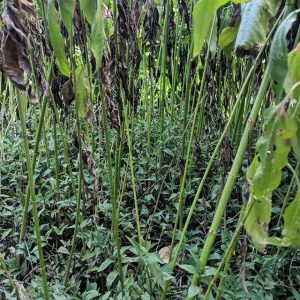Sunflower Artichoke (Helianthus tuberosus), a North American aster on something of a march along Melbourne’s waterways. Also known as Jerusalem Artichoke, Sunchoke, topinambour.
Although still very dry, we are now on the downslope towards what would in the Northern Hemisphere be termed ‘autumn’. With that turn of the season comes the sudden inflorescence of various imports that, tuned to seasonal cycles in other places, had until now been growing in the background, quiet and unremarkable. In Melbourne’s disordered riparian systems, Sunchoke is one of those plants, a recent escape from the veggie patch that appears to be succeeding in extending its footholds on urban creekways and infrastructural margins.
Sunchoke is already a major weed in Europe, where it has been cultivated since the early 1600s after appropriation from the first peoples of North America. It is also a significant introduction to China and Japan, and has been recorded on waterways across the top of NZ’s North Island.
First recorded in Australia in 1963 on a rubbish dump in the ACT, this perennial sunflower and root vegetable also turned up on Sydney streams in 1965. The first Melbourne records date to 1987, when it was found along the Dynon Road Tidal Canal (presumably in fly tipped garden or kitchen scraps, as this is not a waterway that would receive garden runoff!). The plant was in Dandenong Creek by 1996, and in the Merri Creek in 2001 when it turned up south of Bell Street. It is now extensively established on alluvial sections of the lower Merri, and also informally reported on Darebin Creek.
Once established on a new waterway by erosion from domestic gardens or lazy tipping of waste, the spread of this tuberous perennial is presumably largely dependent on flood rafting to new sites. However, as seen here (frame 10), Sunchoke is also present on non-alluvial sites such as on the M80 trail in Thomastown. While possibly chucked over the back fence, the alternative explanation is that an occasional mechanism of seed dispersal may also be available.
View Original Post on Instagram
Search for information about Helianthus tuberosus in the Flora of Victoria
View information and occurrences of Helianthus tuberosus on the Atlas of Living Australia
